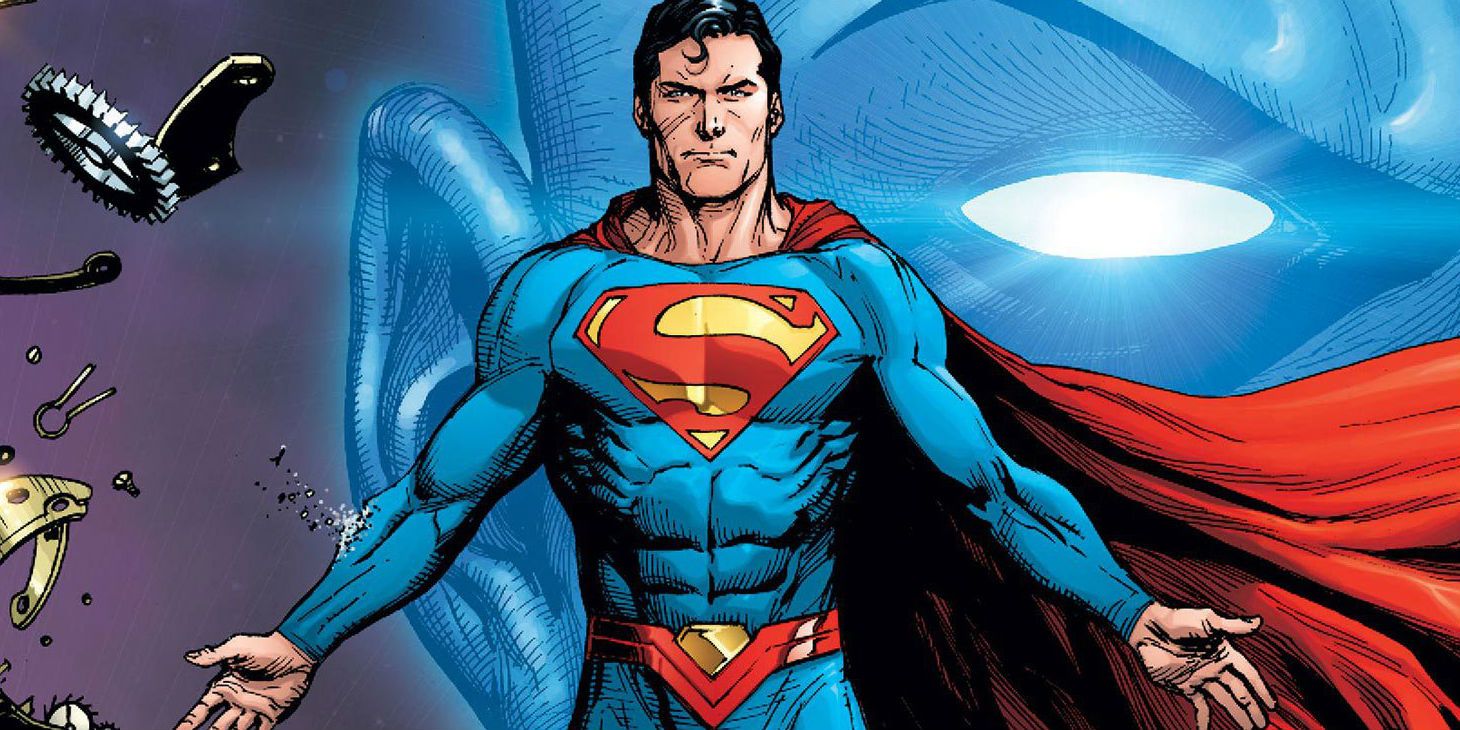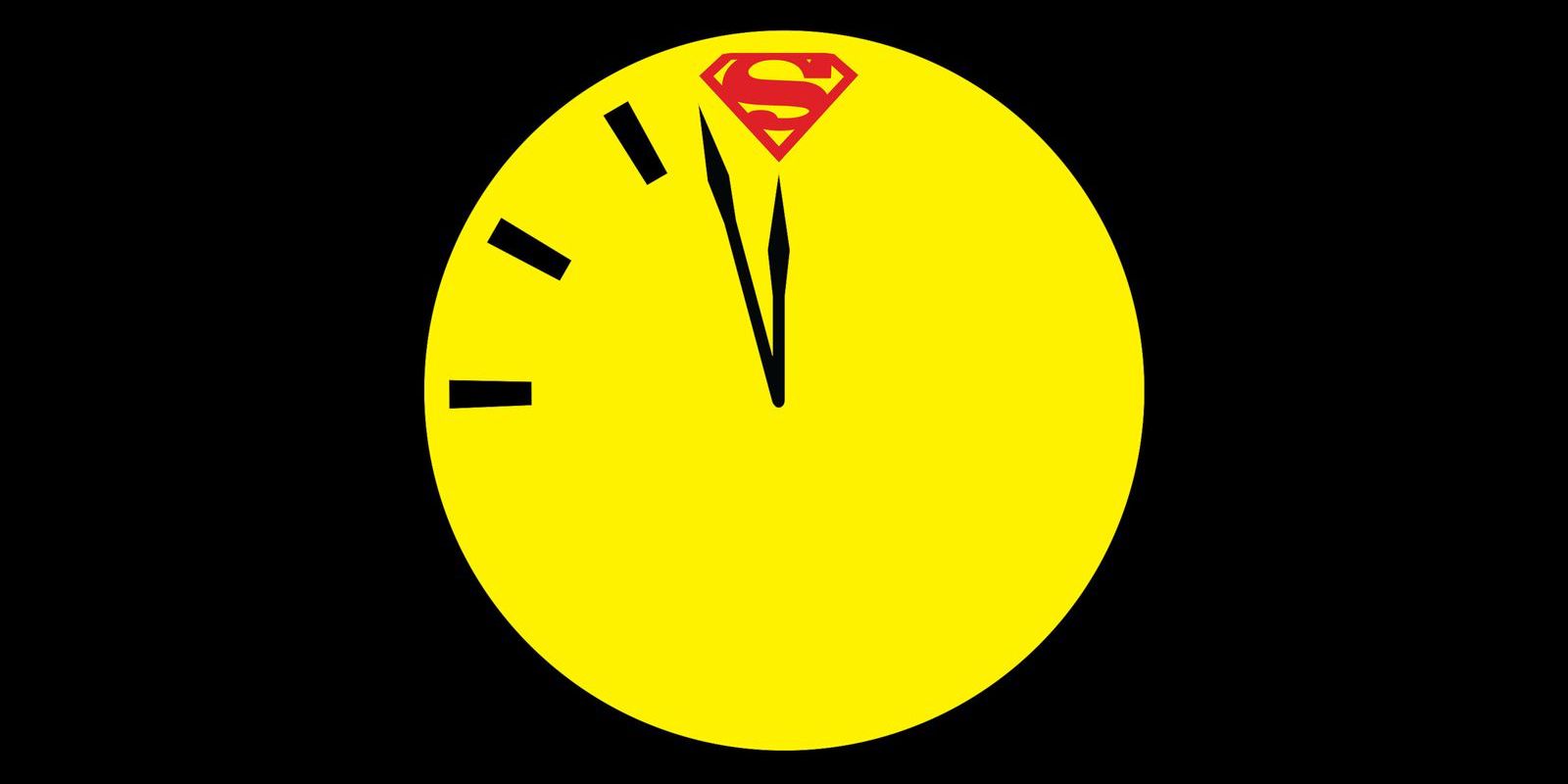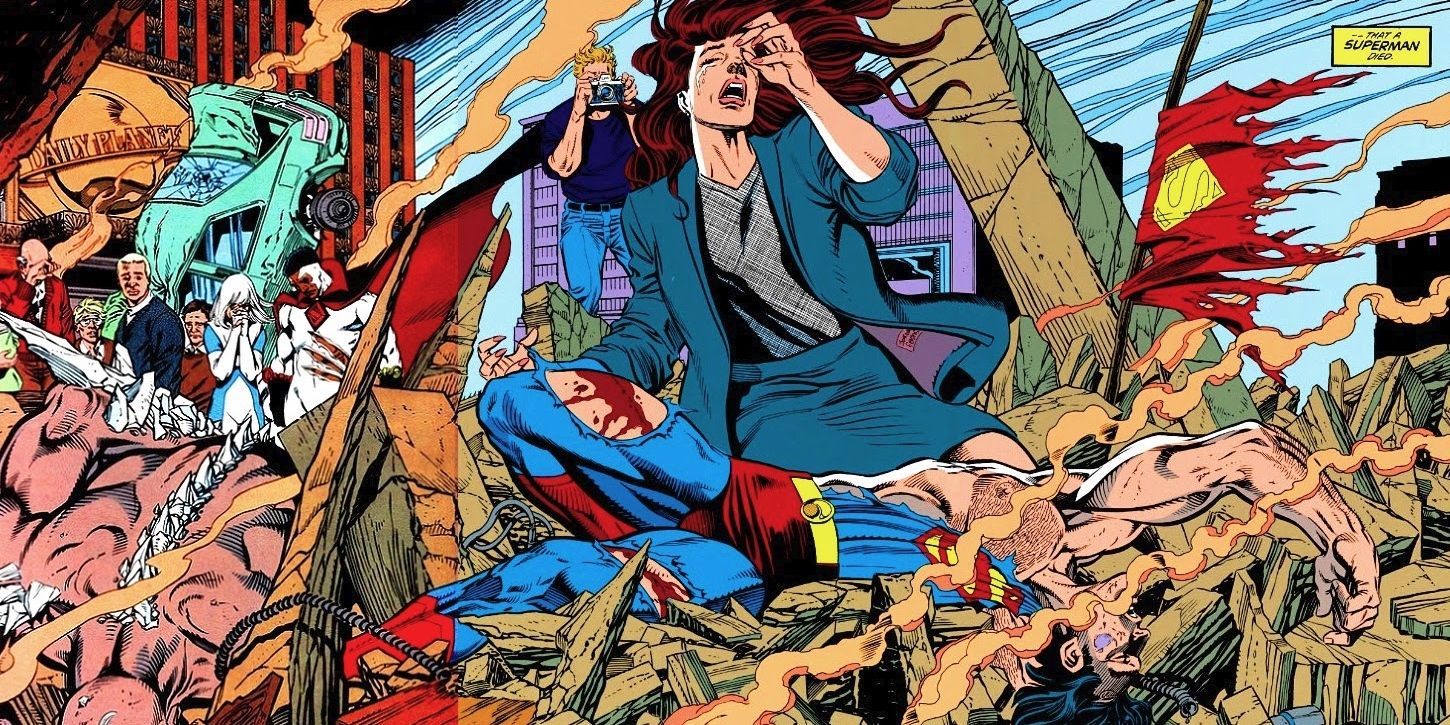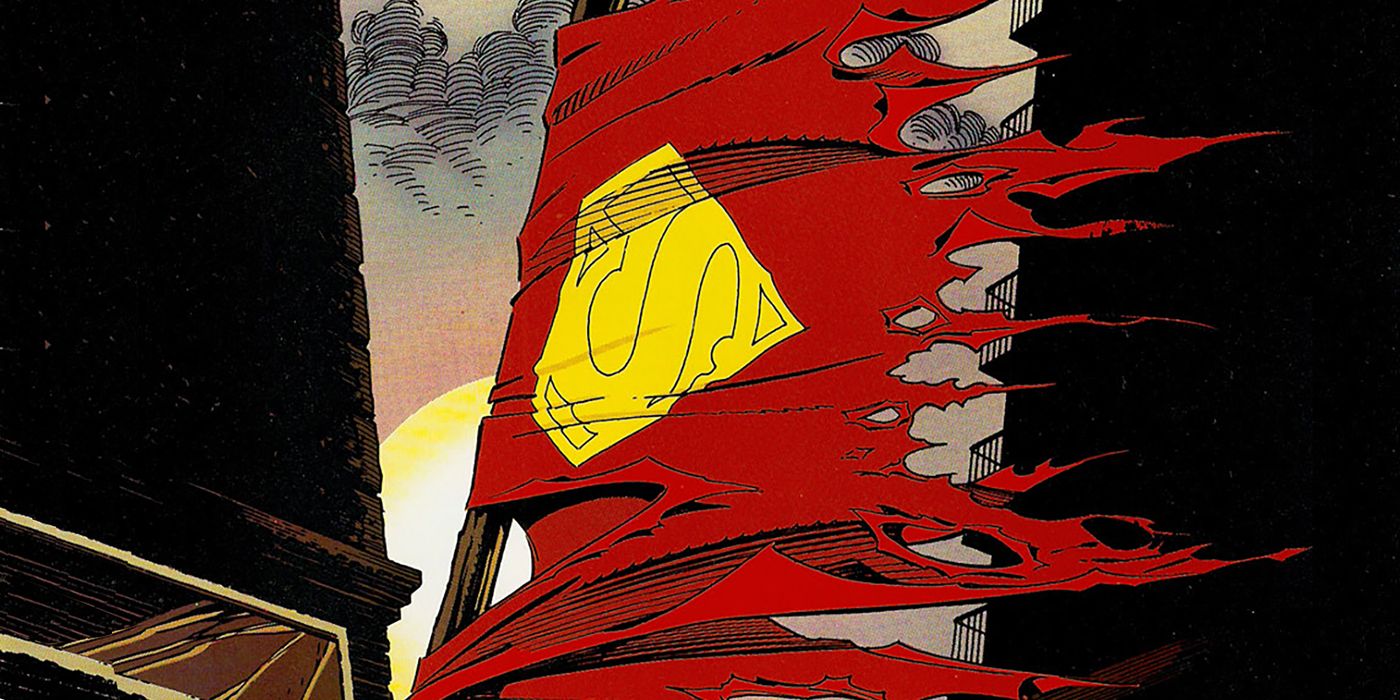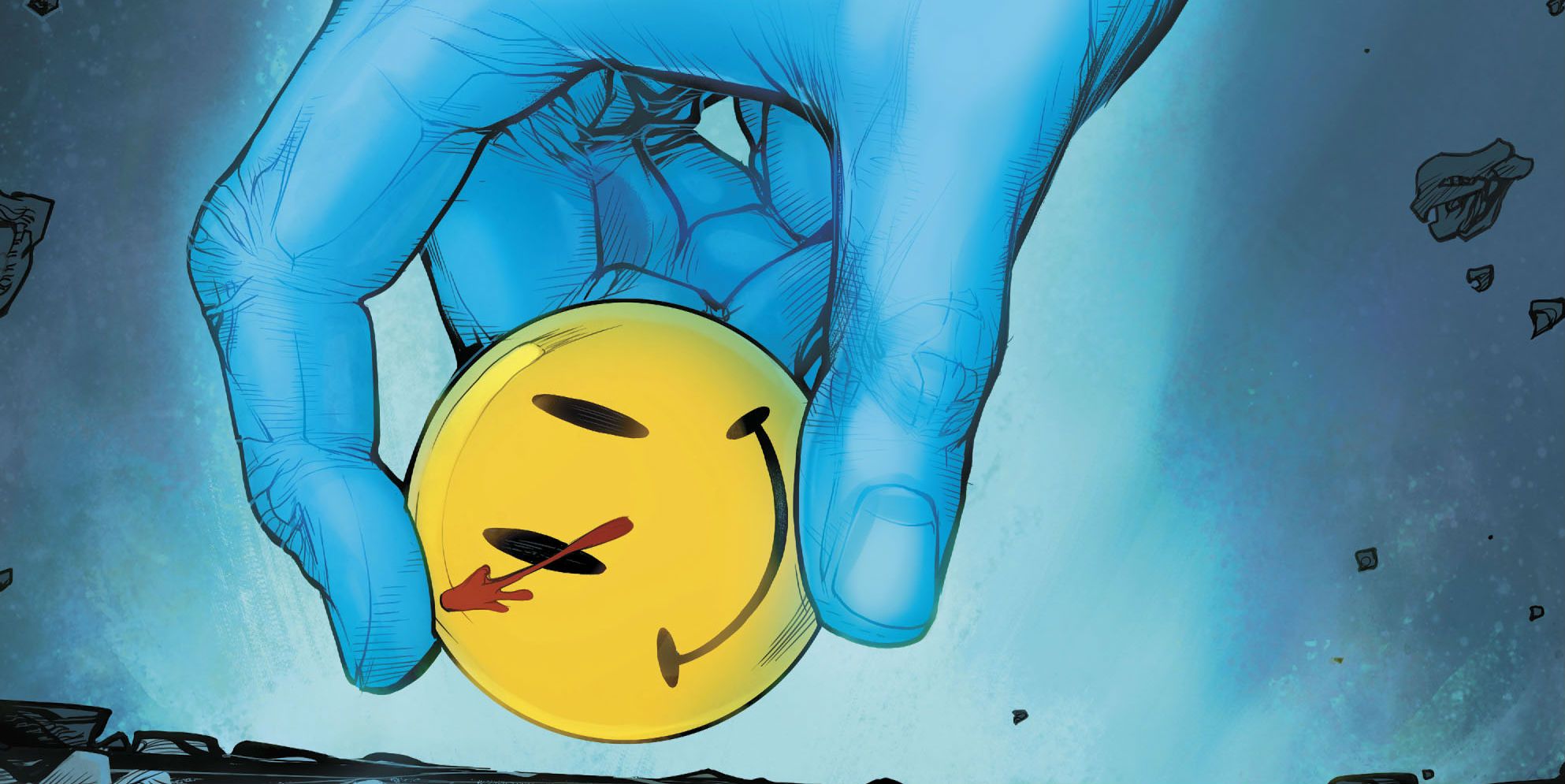This evening, DC Comics fans got their first look at the upcoming event series, Doomsday Clock, during a panel with DC President and Chief Creative Officer Geoff Johns as New York Comic Con. During the panel, Johns shared the first six pages of the 12-issue series - which will have characters from Alan Moore and Dave Gibbon's seminal Watchmen series cross paths with the heroes of the DC Universe - offering up a strong impression of what we can expect from Doomsday Clock.In short, Doomsday Clock has Watchmen in its bones, with Johns regularly commenting on how much he and artist Gary Frank were inspired by that original comic and that they tried to closely adhere to what he calls a "Watchmen rule book." And it's evident in just these few pages, with their nine-panel grids, heavy dialogue, much of snippets from broadcast, and a generally bleak state of the world. Though the pages shared today are in black and white, it's very easy to imagine them in Watchmen's distinct palette of pinks, purples and greens. It was recently announced that Doomsday Clock is a true sequel to Watchmen, and judging by these pages, that is very much the case.However, Doomsday Clock is also an event deeply connected to the DC Universe and its heroes; in particular, Superman. Johns has repeatedly discussed that his intention with DC Comics' Rebirth was to restore hope to the DC Universe and no character embodies that optimism more than Superman. And if Superman represents hope and optimism and the bright ideal that Johns imagines for the DC Universe, then the opposite of that is the despair and cynicism of the world painted in Watchmen and so clearly embodied in the detached Dr. Manhattan. Throughout DC Universe Rebirth #1 and later mini-events, such as The Button, Johns and his team have teased those opposing world views, with them set to come crashing together across Doomsday Clock's 12 issues. But how?
The Countdown to Doomsday Begins
In the very first panel of Doomsday Clock we can see a narration bubble that reads, "November 22nd, 1992... or maybe it's the 23rd," giving an (almost) exact starting point for the story being told. From there, it's quickly established that what we're seeing are events happening in the same world inhabited by the characters of Watchmen seven years earlier. And that world is in chaos, any peace achieved by Ozymandias' insane plan from Watchmen's final issue has since rotted, and the world is now worse off than it was before. In all this, their heroes have abandoned them, their god - Dr. Manhattan - has abandoned them, and the people are left in terror. The world of Watchmen is one in desperate need of hope. So what happened?
During the New York Comic Con panel, Johns confirmed Doomsday Clock would have the answers, saying: "Everything that you read from these six pages will be explained." Meaning we'll learn how Ozymandias was exposed, we'll learn what happened with Rorschach's journal, and oh yeah, we'll learn how Rorshach isn't dead - all of this and more will be answered over the course of Doomsday Clock's 12 issues. Additionally, we can expect Johns to explain his reason for setting the start of Doomdsay Clark in 1992, a year which he also remarked is "an important year" in DC Comics history. So what happened in the DC Universe in 1992? And how might this tie in to Doomsday Clock?
The Death of Superman
In 1992, DC Comics began what would become one of the most famous comic book stories of all time - The Death of Superman. Beginning with Superman: Man of Steel #18, the story of how Superman would come to fight and defeat the indestructible monster, Doomsday but ultimately give his life in doing so unfolded across seven issues. The event spanned the four Superman titles currently being published at the time as well as an issue of Justice League of America, before culminating with the climactic showdown in Superman #75 in November 1992.
The Death of Superman arc was a monumental success for DC Comics, gaining notoriety the world over, selling out issue after issue and topping the charts. For the characters within the DC Universe, the impact of Superman's death was enormous. Heroes grieved, the public despaired, and many of the issues following Superman's death dealt with the hopelessness that had descended on the DC Universe.
Inevitably, because these are comic books and no stays dead forever, Superman would return, but the landscape of the DC Universe had been changed. As the modern age would continue, the stories became darker, the characters more cynical, and in time, the hope which had always been a cornerstone of the DC Universe didn't shine as brightly as it once did.
How It Connects To Doomsday Clock
It's an established fact that within the universe of Watchmen the DC Comics characters exist in the same way as they do in ours - they're fictional characters found in comic books. As Hollis Mason writes in an excerpt from Under The Hood, found in Watchmen #1,
"For me, it all started in 1938, the year they invented the super-hero. I was too old for comic books when the first issue of Action Comics came out ... but from the moment I set eyes on it I only had eyes for the Superman story. Here was something that presented the basic morality of the pulps without all their darkness and ambiguity."
Johns confirmed this during the NYCC panel, replying "yes" to a question about whether or not Doomsday Clock would address the fact the publisher and its fictional characters already exist within the Watchmen universe. Obviously, Johns wouldn't elaborate further, but the late 1992 setting for Doomsday Clock's story coupled with his comment that the year is also an important one for DC Comics provides us with a giant clue. If Action Comics #1 released in 1938 starring Superman in the Watchmen universe just as it did in ours, then we can likely assume 1992's The Death of Superman arc did so as well.
This puts the start of Doomsday Clock in the days just after the release of Superman #75. The title, Doomsday Clock takes on whole different meaning now, doesn't it? The motif of seconds ticking towards midnight has long been associated with the Watchmen brand (not too mention impending global annihilation), but in this context, it's refers to Doomsday, literally, and to the death of Superman, the death of hope.
Now, just how The Death of Superman could factor in to Doomsday Clock remains a mystery. In the original Watchmen comic, the story within a story mechanic was employed by having a character in Watchmen reading another comic, Tales of the Black Freighter, and the stories of that comic would serve as a companion to the events in Watchmen. Doomsday Clock might take a similar route, with Johns' story including and commenting on moments from that famous arc the ones which immediately followed.
Then again, Doomsday Clock is expected to address the many inconsistencies within the DC Universe itself, explaining the recent continuity changes in a weirdly metatextual manner. Many have assumed this somehow places Dr. Manhattan as either an architect or at least a manipulator of the DC Universe, using his godlike powers to, well, play god. This implies a more straightforward crossover than a DC comic simply existing as a work of fiction within the world of Doomsday Clock. And Johns even suggested the series would include face-to-face meetings between DC Comics and Watchmen characters during the NYCC panel, implying Doomsday Clock would contain scenes with Superman and Dr. Manhattan as well as Ozymandias and Lex Luthor.
It remains to be seen just how Johns will orchestrate this grand opus, somehow weaving together the threads and themes of both Watchmen and the DC Universe. But with Superman being such an integral figure to the story, embodying the optimism of the DC Universe, it seems like too much of a coincidence for Doomsday Clock's setting to come at a time when Superman has died and the DC Universe is left without hope.
-
Will The Death of Superman play a role in Doomsday Clock that's similar to the Tales of the Black Freighter in Watchmen? Could it be revealed that Dr. Manhattan was responsible for Superman's return? Is the year 1992 a major clue as to what Doomsday Clock is all about? Share your theories in the comments!
DOOMSDAY CLOCK #1 hits shelves November 22, 2017.

